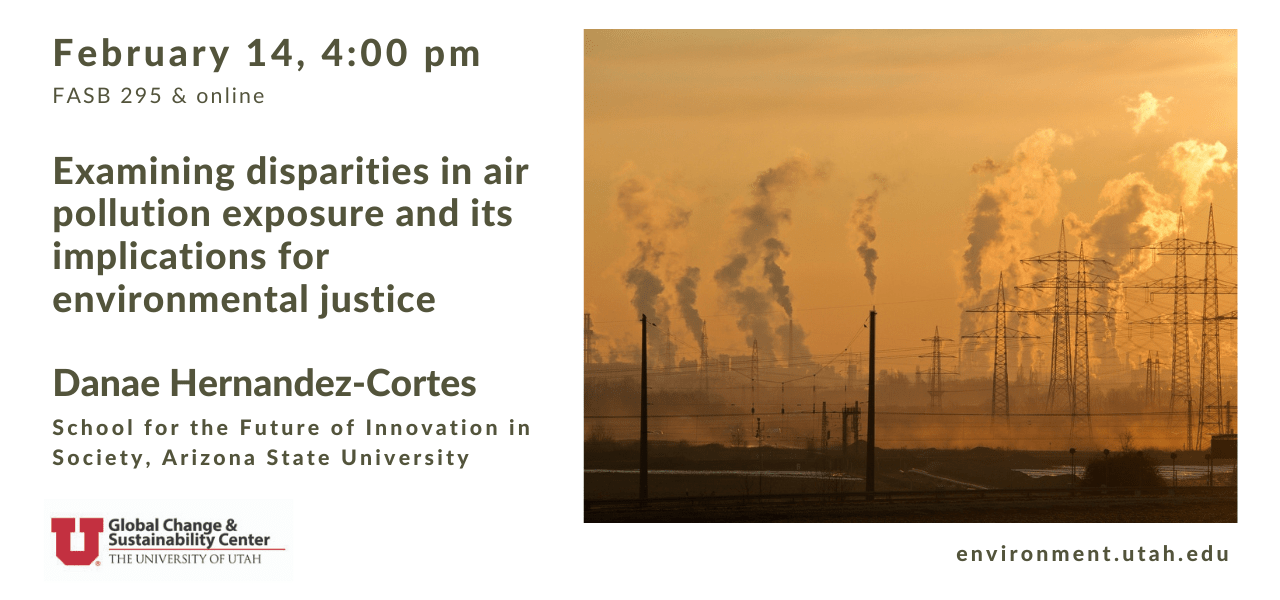
By Sydney Murray, Sustainability Office
The impacts of pollution are felt all around the world, but they are not felt equally. Low-income and minority communities are often deprived of resources and political protections, leaving them to face the brunt of environmental pollution and its health consequences including cardiovascular and respiratory diseases.
On Tuesday, February 14 at 4 p.m., Dr. Danae Hernández-Cortés will give a GCSC Seminar called “Examining disparities in air pollution exposure: Implications for environmental justice.” In this seminar, she will discuss her research on California’s ozone policies and their implications for asthma attack rates. “I have found a lot of research that looks at health disparities” she says. “However, there is not a lot of research linking health disparities and pollution disparities together.”

While some policy changes have successfully decreased overall pollution, marginalized communities continue to experience disproportionate environmental health harms. For example, Hernández-Cortés explains that there has been an overall reduction in asthma cases since the National Air Quality Standards were implemented under the Clean Air Act of 2008. “But the main people that are experiencing these decreased rates are affluent white populations” she adds. Meanwhile, Black and Hispanic communities experience even higher rates of asthma than before these policies were implemented. Hernández-Cortés investigates this growing disparity, and believes it may be due to the systemic racism present in the U.S. health sector.
Pollution, health disparities, and environmental justice are personal to Hernández-Cortés. Growing up in the southeastern region of Mexico, she noticed that rural communities near her hometown were more severely impacted by agricultural pollution than their urban counterparts. This disparity intrigued her and led her to study environmental economics to better understand how environmental policies shape people’s lives. “I always tell my students that life is full of trade-offs,” she says. “So understanding those trade-offs, particularly between the environment and policy, is so important.”
Hernández-Cortés hopes attendees will consider how coupling climate data with policy evaluation methods is necessary to study environmental justice questions. Noting that there are similarities in air pollution sources between California and Utah, she also hopes to learn from attendees about how they are coping and what changes they would like to see.
Attend the Seminar on Tuesday, Feb. 14, in room 295 of the Frederick Albert Sutton building from 4-5 p.m. (or on Zoom) to learn more.
